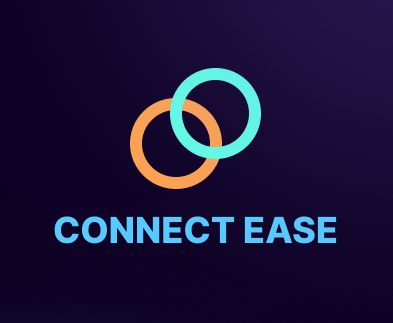Connect Ease
Designing for Empathy in Everyday Conversation




How it Started
This project began during my MSc in Computer Science as part of a team brief to design a tool that could meaningfully improve everyday communication. Our focus was on neurodiverse users, particularly those with social anxiety, who often find spontaneous conversations stressful. For me, it was personal. I had seen friends and family face these challenges, and I knew my role in the team would be to make sure our ideas were grounded in real stories and real needs.


🧠 Discovering the Problem

“I rehearse conversations in my head all day, but then someone says something unexpected and I shut down.”

I led the user research for our team, starting with interviews and surveys involving neurodiverse individuals and caregivers. We explored their experiences, what helped them feel prepared, and what caused anxiety in social settings. This one quote from a participant stuck with me. That moment set the tone for the project. This was not about fixing people; it was about designing a tool that could give them confidence and control when conversations went off script.
“I rehearse conversations in my head all day, but then someone says something unexpected and I shut down.”



From Paper to Prototype
I took the lead on creating our early wireframes, mapping scenarios from ordering food to politely declining an invite. These low-fidelity sketches allowed us to explore different flows without getting bogged down in visuals too soon. I translated these into clickable prototypes for testing, ensuring we could quickly see what worked and what did not. The feedback cycle was constant, with every session shaping the next iteration. A breakthrough came when a tester told me, “It feels like the app knows what I need, not just what I said.”

🎯 Defining the Goal
As a team, we decided the app needed to work entirely on the user’s terms. It should store personal preferences and conversation starters, help generate quick editable responses for different situations, and feel calm, supportive, and safe. My role here was to turn the research insights into clear user personas and journey maps that would guide the design decisions for the whole team.



🎨 Designing with
Calm and Clarity
While other team members developed the visual style, I focused on refining the flow and interaction patterns to keep the experience simple and reassuring. I worked closely with the design lead to ensure that the prototype reflected our research findings. We used muted colours to reduce visual noise, large touch targets for ease, and a “Response Builder” that encouraged personalisation without pressure.


🔁 Testing and Iterating

I facilitated remote usability testing with four participants, using the prototypes to validate both navigation and task flows. Feedback led to changes like adding emoji and icon tags for faster recognition, and reworking the tab structure to make navigation clearer. The best moment for me was hearing a participant say, “I like that nothing moves too fast. It’s calm.” That single line confirmed we were on the right track.

🧭 Reflections on the Journey
Connect Ease was more than just a graded project. It was a chance to see how thoughtful research and iterative prototyping could shape a product that really understands its users. It reinforced my belief that design is not about pushing users to adapt to technology, but about shaping technology to fit users’ lives.


🚀 What’s Next

Though still a concept, we envisioned future features like speech to text for real time conversation support, a caregiver mode, and smartwatch integration for discreet access. At its heart, the app would always be the same, a quiet, steady companion that helps you feel ready for the moments that matter.